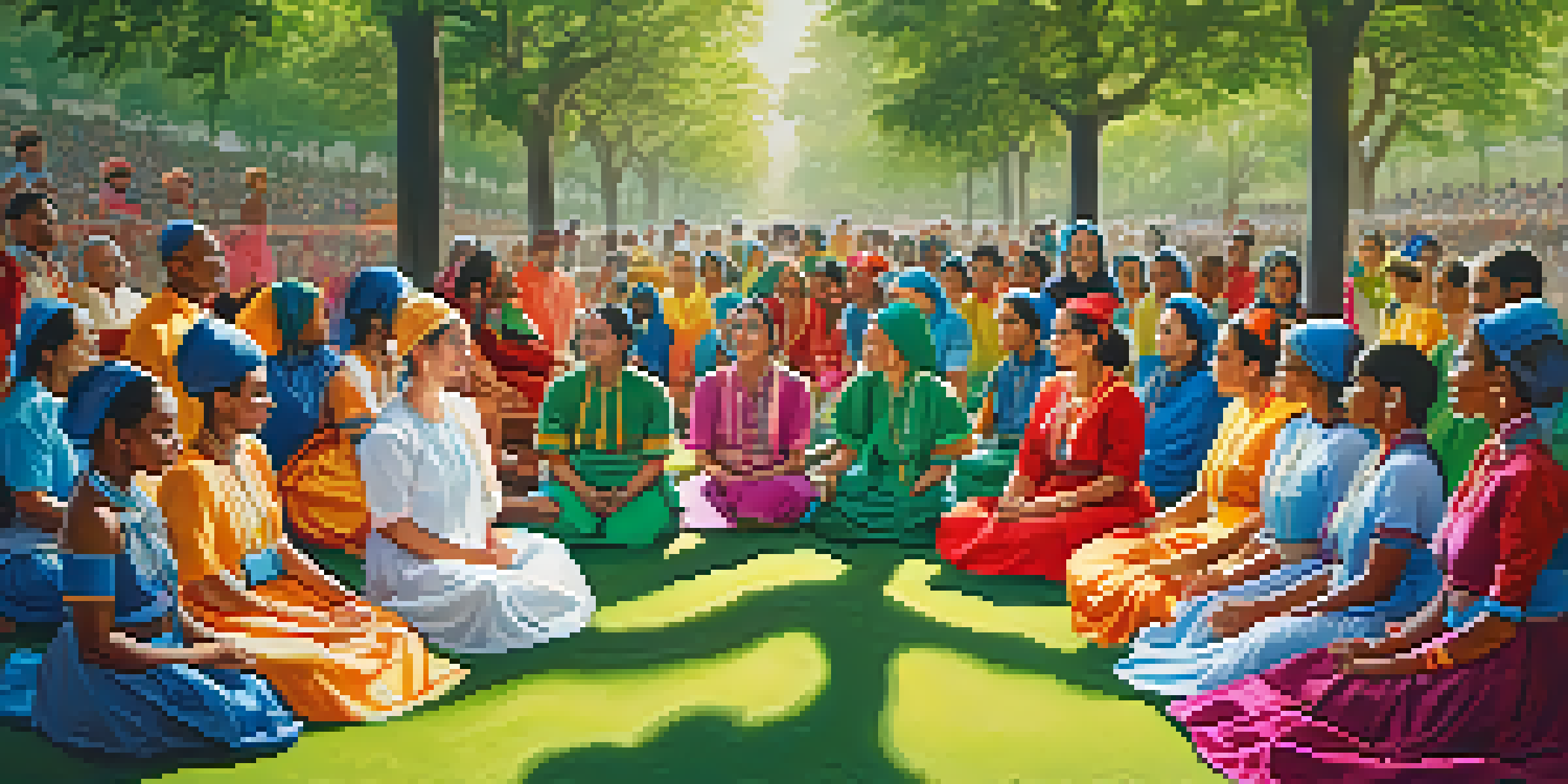Understanding the Role of Chants in Cultural Music Practices

Defining Chants and Their Cultural Significance
Chants are rhythmic, repetitive vocal sounds that convey emotions and meanings. They often serve as a way to connect people to their cultural roots and traditions. In various societies, chants play a vital role in rituals, celebrations, and communal gatherings, acting as both a form of expression and a means of transmission for cultural values.
Chants in Religious and Spiritual Practices
Many religious traditions incorporate chants as a way to invoke the divine or express devotion. For instance, in Buddhism, chanting mantras is believed to bring about spiritual awakening. Similarly, in Christianity, hymns and chants help congregations unite in worship, creating a profound sense of community and shared belief.
Chants Connect Cultural Roots
Chants serve as a vital link to cultural traditions and values, enhancing communal identity and expression.
The Role of Chants in Cultural Storytelling
Chants often serve as a medium for storytelling, where history, legends, and morals are passed down through generations. For example, indigenous cultures use chants to recount tales of creation or significant events, embedding cultural lessons within the rhythm and melody. This oral tradition not only preserves history but also strengthens communal bonds.
Chants as a Tool for Social Cohesion
In many cultures, chants are used during communal activities to foster unity and teamwork. Whether it's the rhythmic chanting at sports events or group singing during festivals, these practices create a sense of belonging and shared identity. The collective experience of chanting can enhance social ties and promote camaraderie among participants.
Chants Foster Community and Unity
Through collective chanting, whether in religious settings or social gatherings, a strong sense of belonging and teamwork is cultivated.
Chants in Contemporary Music and Media
Modern music often incorporates traditional chants, bridging the gap between old and new. Genres like hip-hop, pop, and world music frequently feature chants, making them accessible to wider audiences. This fusion not only revitalizes interest in cultural practices but also invites listeners to engage with diverse traditions.
Chants and Mental Well-being
Engaging in chanting can have therapeutic benefits, promoting relaxation and mindfulness. Many people find that the repetitive nature of chants helps alleviate stress and anxiety, creating a meditative state. This aspect highlights how chants can play a role in personal health, beyond their cultural significance.
Chants Promote Mental Well-being
The repetitive nature of chanting can alleviate stress and foster mindfulness, contributing to personal health and relaxation.
Chants as a Form of Resistance and Empowerment
Throughout history, chants have been used as a form of protest and empowerment. Movements for social justice often utilize chants to unify voices and amplify messages. These chants not only serve to rally supporters but also to create a sense of hope and determination in the face of adversity.
Preserving Chants for Future Generations
As globalization continues to influence cultural practices, preserving chants becomes essential. Efforts to document and teach traditional chants help ensure that these rich cultural expressions are not lost. By passing them down through teaching and performance, communities can maintain their heritage and instill pride in future generations.